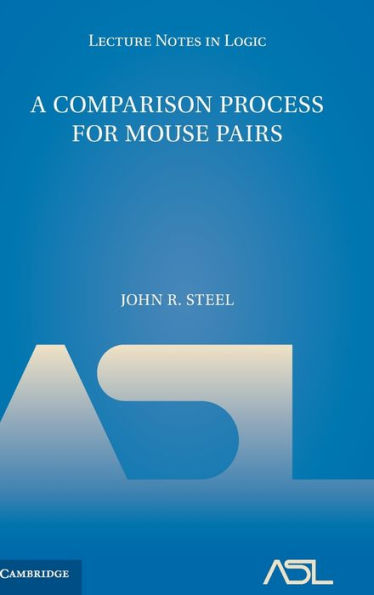A Comparison Process for Mouse Pairs
This book proves some important new theorems in the theory of canonical inner models for large cardinal hypotheses, a topic of central importance in modern set theory. In particular, the author 'completes' the theory of Fine Structure and Iteration Trees (FSIT) by proving a comparison theorem for mouse pairs parallel to the FSIT comparison theorem for pure extender mice, and then using the underlying comparison process to develop a fine structure theory for strategy mice. Great effort has been taken to make the book accessible to non-experts so that it may also serve as an introduction to the higher reaches of inner model theory. It contains a good deal of background material, some of it unpublished folklore, and includes many references to the literature to guide further reading. An introductory essay serves to place the new results in their broader context. This is a landmark work in inner model theory that should be in every set theorist's library.
1142078769
A Comparison Process for Mouse Pairs
This book proves some important new theorems in the theory of canonical inner models for large cardinal hypotheses, a topic of central importance in modern set theory. In particular, the author 'completes' the theory of Fine Structure and Iteration Trees (FSIT) by proving a comparison theorem for mouse pairs parallel to the FSIT comparison theorem for pure extender mice, and then using the underlying comparison process to develop a fine structure theory for strategy mice. Great effort has been taken to make the book accessible to non-experts so that it may also serve as an introduction to the higher reaches of inner model theory. It contains a good deal of background material, some of it unpublished folklore, and includes many references to the literature to guide further reading. An introductory essay serves to place the new results in their broader context. This is a landmark work in inner model theory that should be in every set theorist's library.
180.0
In Stock
5
1

A Comparison Process for Mouse Pairs
548
A Comparison Process for Mouse Pairs
548Hardcover
$180.00
180.0
In Stock

Product Details
| ISBN-13: | 9781108840682 |
|---|---|
| Publisher: | Cambridge University Press |
| Publication date: | 11/24/2022 |
| Series: | Lecture Notes in Logic , #51 |
| Pages: | 548 |
| Product dimensions: | 6.18(w) x 9.25(h) x 1.46(d) |
About the Author
From the B&N Reads Blog
